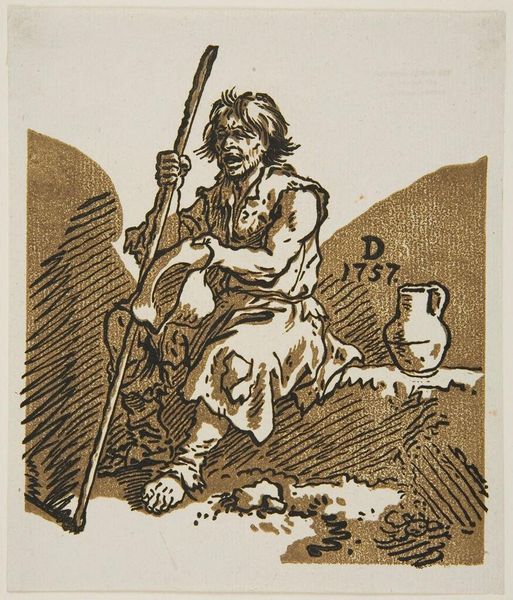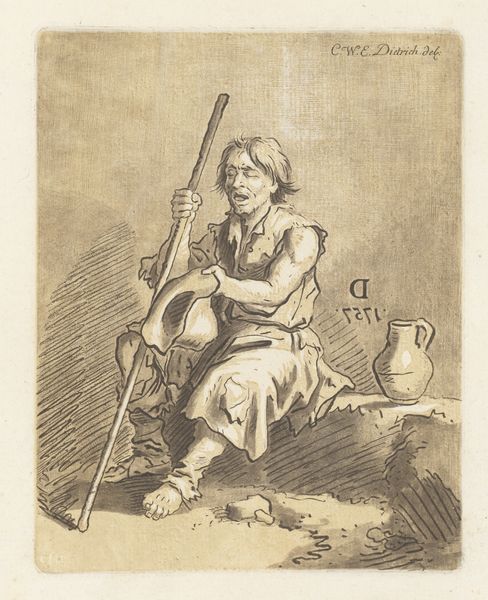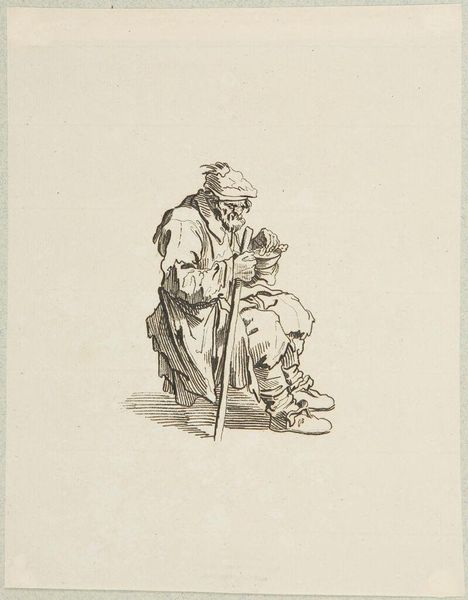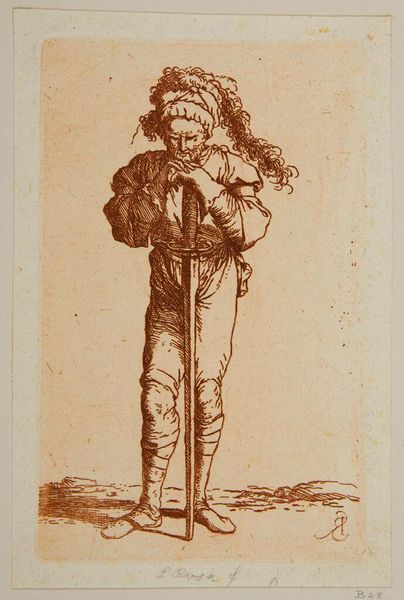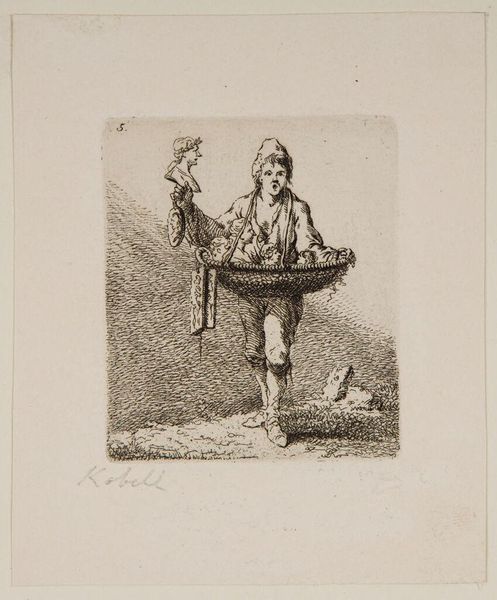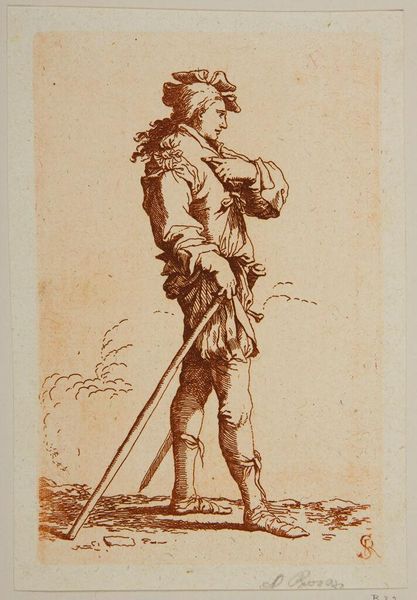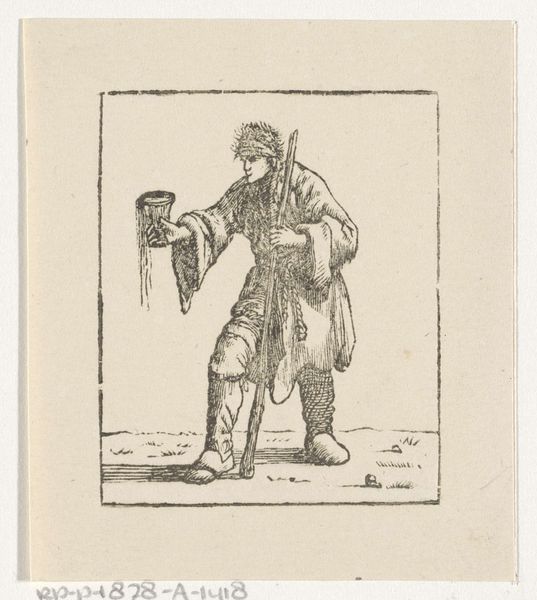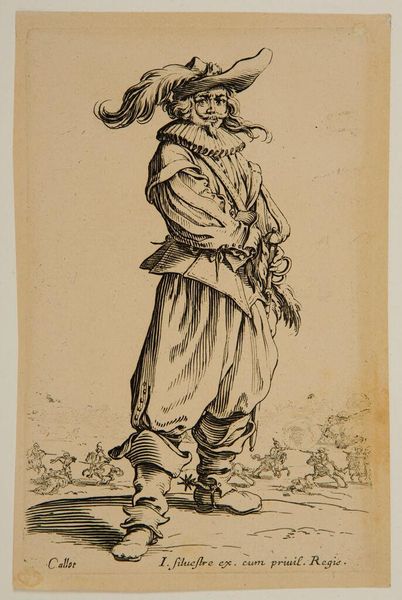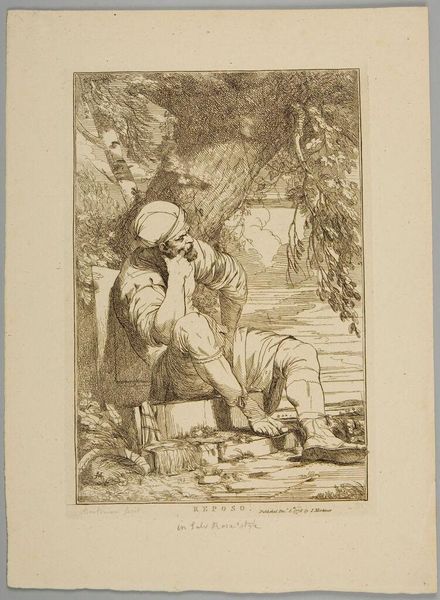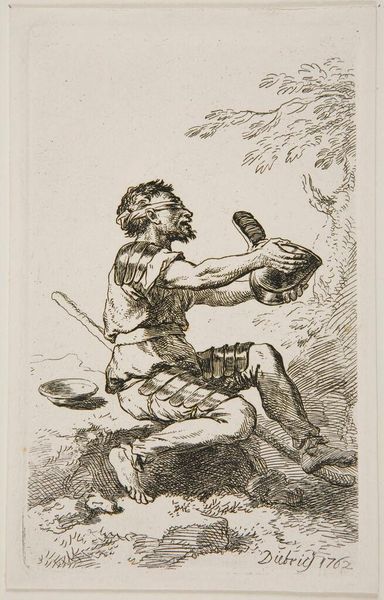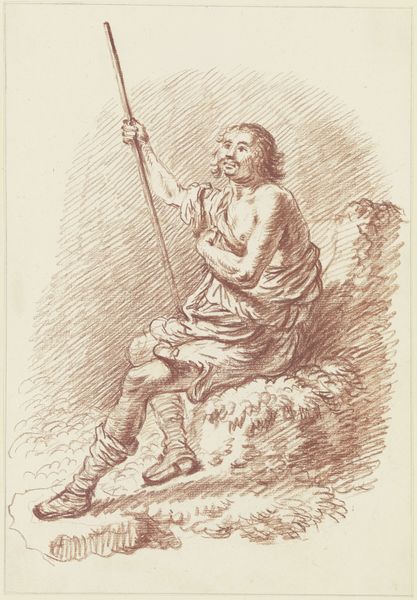
Copyright: CC0 1.0
Curator: This is Christian Wilhelm Ernst Dietrich's "Blind Beggar," created around 1757. It's held here at the Harvard Art Museums. Editor: I see a story etched in sepia tones, a raw vulnerability jumping right off the paper! It feels...urgent. Curator: Indeed. Dietrich, a contemporary of the Enlightenment, used prints like this to explore social themes and class disparities. Notice the beggar's tattered clothes and reliance on a walking stick. Editor: And that earthenware jug beside him... a symbol of sustenance, perhaps? Or maybe just a reminder of what he lacks? I feel a wave of empathy, a connection to his struggle. Curator: The image certainly speaks to the era's anxieties around poverty and disability. The figure embodies the very real precarity of life for many. Editor: It's more than just historical document, though. The stark lines and that limited color palette... it strips away any romanticism. This is poverty laid bare. I really feel it! Curator: Precisely. Dietrich's print challenges viewers to confront uncomfortable truths about social inequity. Editor: Makes you think, doesn't it? How little has changed, really. Curator: Absolutely. It's a stark commentary that resonates even today.
Comments
No comments
Be the first to comment and join the conversation on the ultimate creative platform.

